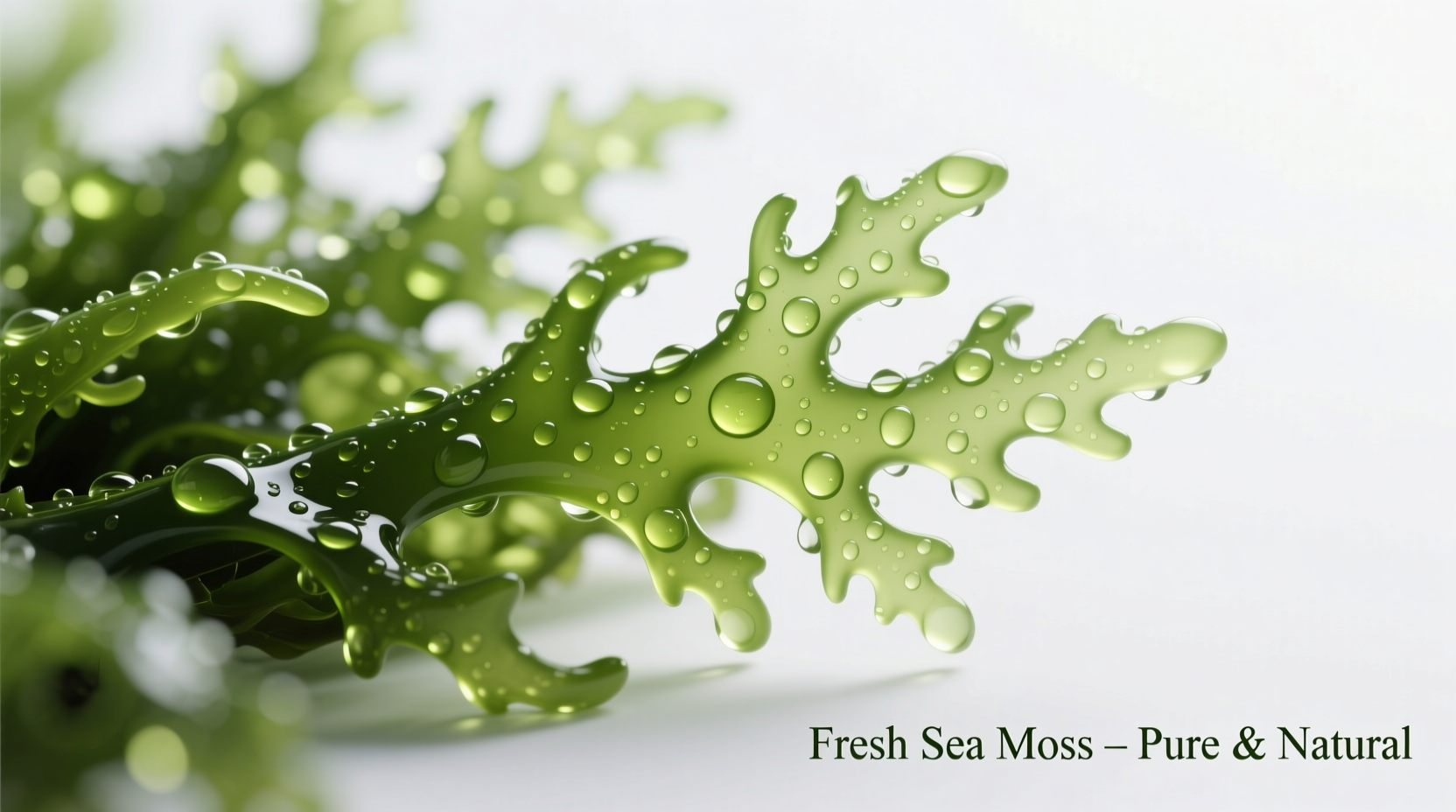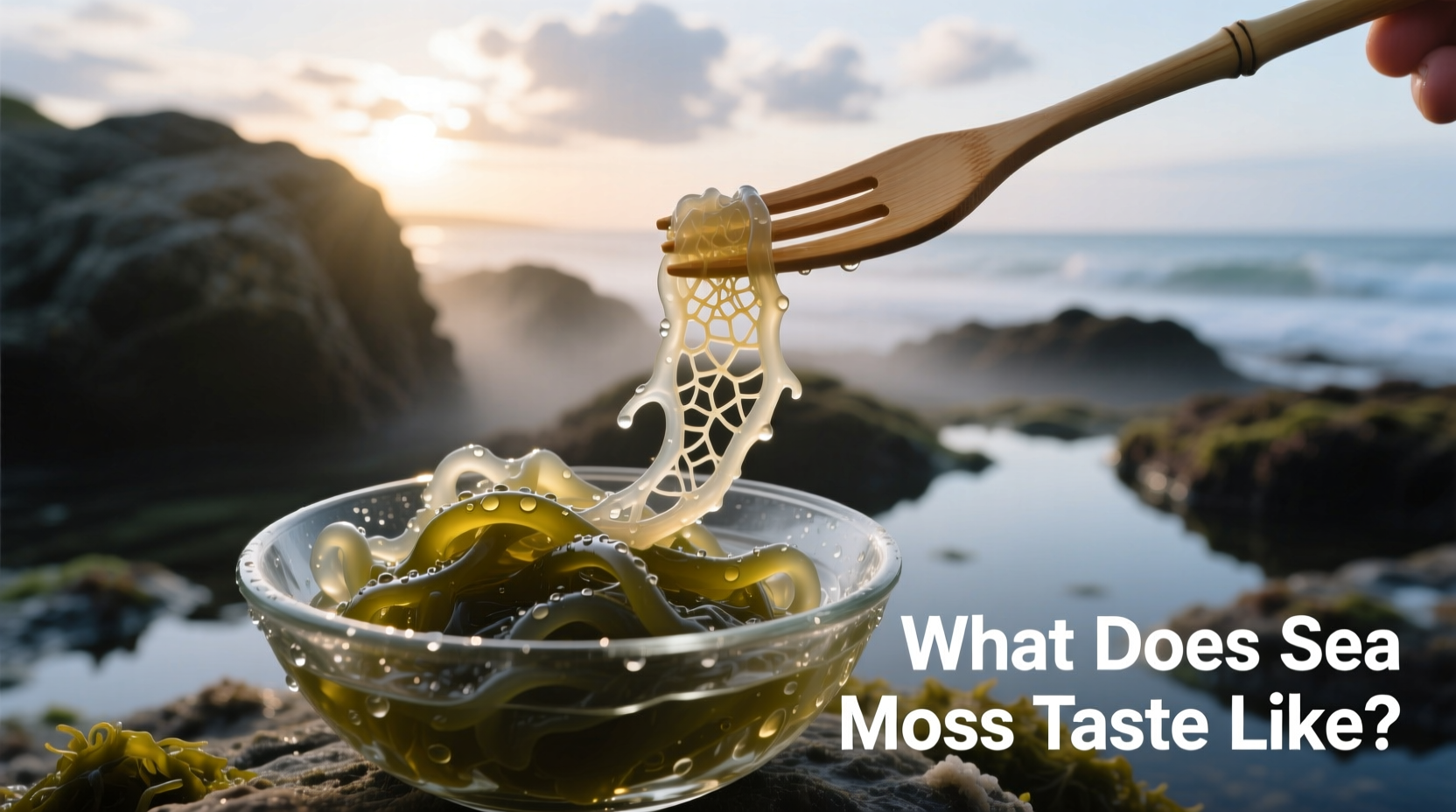Understanding Sea Moss Flavor Fundamentals
Sea moss (Chondrus crispus), also known as Irish moss, delivers a surprisingly neutral taste profile compared to other marine plants. Unlike stronger seaweeds like kombu or wakame, sea moss provides just a whisper of the ocean—think of the clean saltiness you'd experience standing near crashing waves rather than the pronounced fishiness some expect.
According to marine botanists at the Maine Sea Grant College Program, sea moss contains natural compounds like carrageenan that contribute to its mild flavor. These compounds actually help reduce the typical iodine-heavy taste found in many seaweeds, making sea moss uniquely adaptable in culinary applications.

What Does Raw Sea Moss Taste Like vs. Prepared?
Understanding the difference between raw and prepared sea moss is crucial for managing expectations:
| Preparation Stage | Taste Characteristics | Texture Notes |
|---|---|---|
| Raw, unprocessed | Noticeable ocean brine, slightly metallic | Rubbery, tough to chew |
| Soaked 12-24 hours | Much milder, clean saltiness remains | Softer but still firm |
| Blended into gel | Nearly neutral, subtle mineral notes | Smooth, viscous, jelly-like |
The dramatic flavor transformation during preparation explains why many first-time users report surprise at sea moss's versatility. As noted in marine food science research, proper rinsing removes surface impurities that contribute to stronger oceanic notes.
Factors That Influence Sea Moss Flavor
Several elements affect what sea moss tastes like in your final preparation:
- Harvest location: Atlantic coast varieties (particularly from Jamaica and Ireland) tend to have cleaner profiles than Pacific varieties
- Water temperature: Cooler waters produce sea moss with less pronounced mineral notes
- Soaking duration: 24-hour soaks in filtered water with lemon significantly reduce any lingering brininess
- Additives: Rinsing with apple cider vinegar creates the most neutral base for recipes
Chef Nina Curtis of the Caribbean Culinary Institute explains that traditional Jamaican preparation methods specifically address flavor concerns: "We always soak sea moss with a slice of lime and rinse thoroughly—this isn't just tradition, it's food science. The citric acid helps break down compounds that cause stronger ocean flavors."
Managing Sea Moss Flavor in Your Recipes
Whether you're making sea moss gel or incorporating it directly into dishes, these professional techniques help optimize flavor:
For Maximum Neutrality
- Use spring or filtered water for soaking (tap water minerals can accentuate ocean notes)
- Add 1 tablespoon apple cider vinegar per cup of soaking water
- Rinse 3-4 times during the soaking process
- Blend with 1-2 drops of vanilla extract when making gel for sweet applications
Flavor Pairings That Shine
Sea moss's mild profile makes it remarkably versatile. These combinations consistently deliver excellent results:
- Sweet applications: Vanilla, cinnamon, mango, banana, and almond extract mask any residual notes while enhancing creaminess
- Savory dishes: Garlic, black pepper, and tomato-based sauces incorporate sea moss seamlessly
- Smoothies: Blend with strong-flavored fruits like pineapple or berries for complete flavor integration
Food scientists at the University of the West Indies have documented how sea moss's neutral pH (between 6.5-7.5) makes it exceptionally compatible with both acidic and alkaline ingredients—unlike many other seaweeds that can become bitter when combined with certain foods.
Common Taste Misconceptions Clarified
Several myths persist about sea moss flavor that deserve clarification:
- "Sea moss tastes fishy" - This is inaccurate. Unlike fish, sea moss contains no amines that create fishy flavors. Any fishiness comes from improper cleaning or storage.
- "All seaweeds taste the same" - Sea moss has significantly less iodine than kelp (just 2-5mcg per serving vs kelp's 2000+mcg), explaining its milder profile.
- "You can't hide the taste" - When properly prepared, sea moss contributes texture without noticeable flavor in most recipes.
The U.S. Food and Drug Administration's seaweed nutrition documentation confirms these distinctions, noting sea moss's uniquely low iodine content among commercially available seaweeds.
Practical Tips for First-Time Users
If you're trying sea moss for the first time, follow these professional recommendations:
- Start with pre-made gel from reputable suppliers to experience the neutral base flavor before attempting preparation yourself
- For your first preparation, add extra rinsing steps—many beginners underestimate how thorough cleaning needs to be
- Begin with recipes where sea moss plays a supporting role (like smoothies) rather than being the featured ingredient
- Store prepared gel in glass containers (plastic can impart flavors that interact with sea moss)
Remember that properly prepared sea moss should enhance texture without dominating flavor. As culinary expert Maya Gonzalez notes: "The best sea moss preparations are those where you appreciate the creaminess without noticing any distinct 'seaweed' taste—that's when you've mastered the preparation."











 浙公网安备
33010002000092号
浙公网安备
33010002000092号 浙B2-20120091-4
浙B2-20120091-4